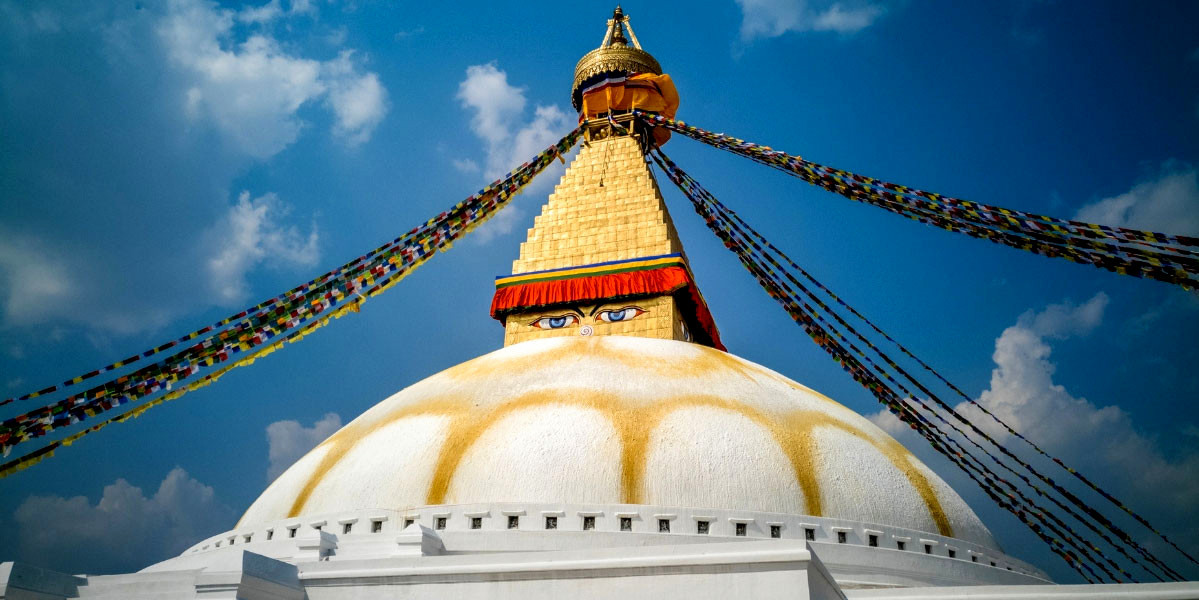Pashupatinath Temple
Pashupatinath Temple, situated on the banks of the Bagmati River in Kathmandu, Nepal, is one of the most sacred Hindu temples dedicated to Lord Shiva. It is not only a pivotal religious destination in Nepal but also a significant cultural icon that attracts thousands of devotees and tourists from around the world.
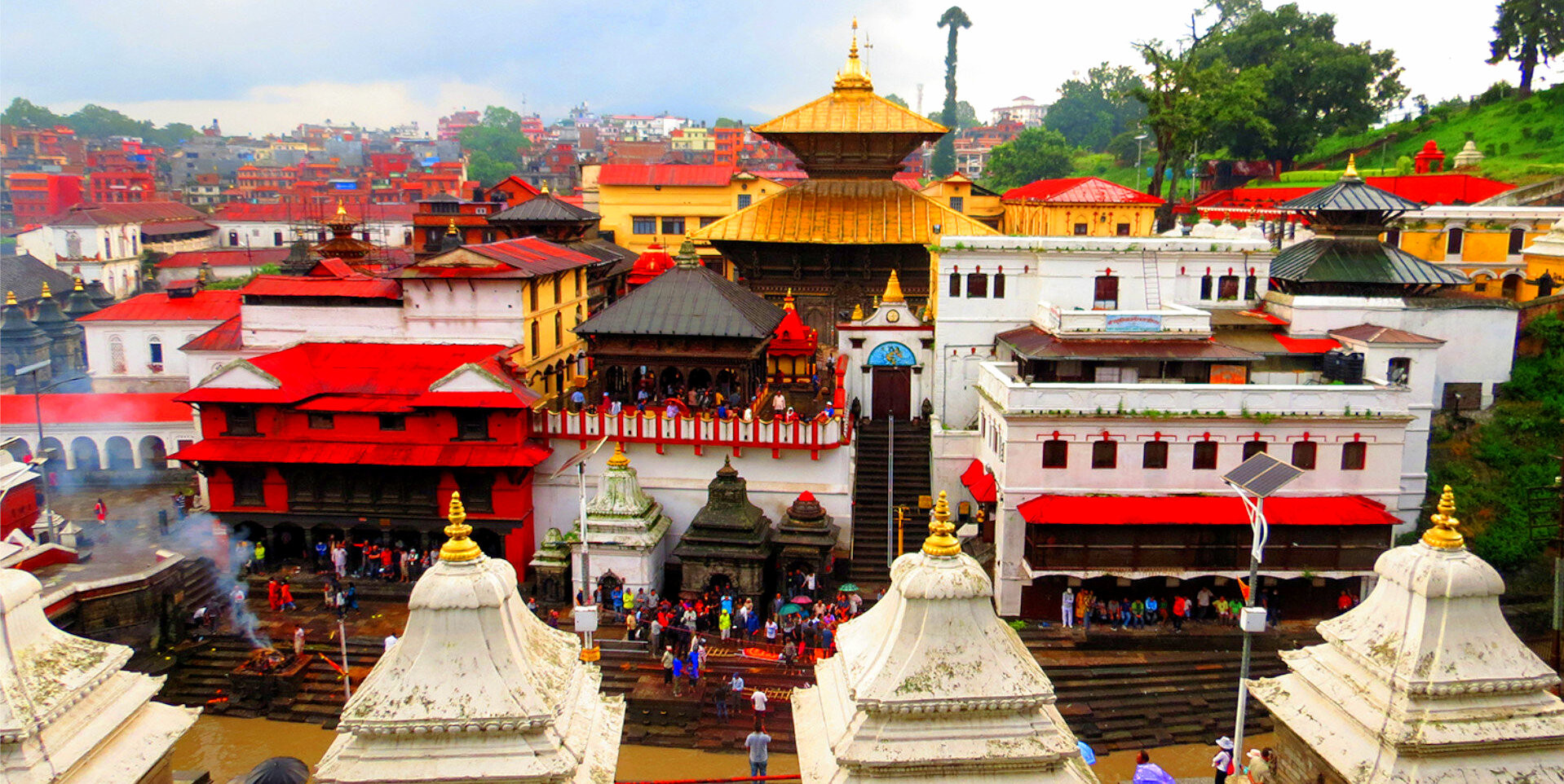
-
History and Significance: The origins of Pashupatinath Temple are shrouded in legend and believed to date back to 400 B.C. The temple's existence comes from historical records dating back to the 5th century. According to one legend, the temple was built on the site where Shiva and Parvati took the form of antelopes and wandered. Recognizing the site's sanctity, subsequent rulers and devotees expanded and enriched the temple complex. The temple serves as the seat of the national deity, Lord Pashupatinath, and plays a crucial role during the festival of Maha Shivaratri. On this day, thousands of devotees visit the temple to pay homage and celebrate the great night of Shiva with night-long prayers and rituals.
-
Architecture: Pashupatinath exemplifies traditional Nepalese temple architecture with its cubic constructions, intricately carved wooden rafters (which are a marvel of Nepalese wood carving), and two-tiered golden roofs. The main temple is built in the classic pagoda style, renowned for its stunning craftsmanship. The temple's sanctum sanctorum houses a lingam, a symbolic representation of Lord Shiva, and sees a continuous flow of devotees presenting their offerings.
-
Cultural and Religious Practices: Pashupatinath is not just a temple but a temple complex that includes many other smaller temples, shrines, and statues spread across a vast area. Devotees can be seen performing various religious rituals along the banks of the Bagmati River, which is considered holy. The riverbanks are also used for cremation ceremonies, and witnessing these can be a profound and solemn experience for visitors, reflecting the deep-rooted spiritual and cultural practices that pervade the site.
-
Accessibility and Impact: The Pashupatinath Temple complex has been a UNESCO World Heritage Site since 1979, acknowledging its importance as a cultural and historical asset. Efforts to preserve its sanctity and architecture continue, with both the Nepalese government and international communities contributing.
Pashupatinath remains a pivotal destination for those seeking insight into Hindu practices and the spiritual history of Nepal. It offers a unique blend of divine and earthly experiences set against the backdrop of Kathmandu's rich cultural tapestry. For visitors, it provides not just a window into the religious life of Nepalese people but also an opportunity to witness the peaceful coexistence of numerous rituals and beliefs in one sacred site.
Swayambhunath Stupa
Swayambhunath Stupa, one of the oldest and most revered shrines in Nepal, is affectionately known as the Monkey Temple due to the large troop of monkeys that reside in parts of the complex. This ancient religious site, perched atop a hill in the Kathmandu Valley, offers not only a spiritual retreat but also panoramic views of the surrounding city.
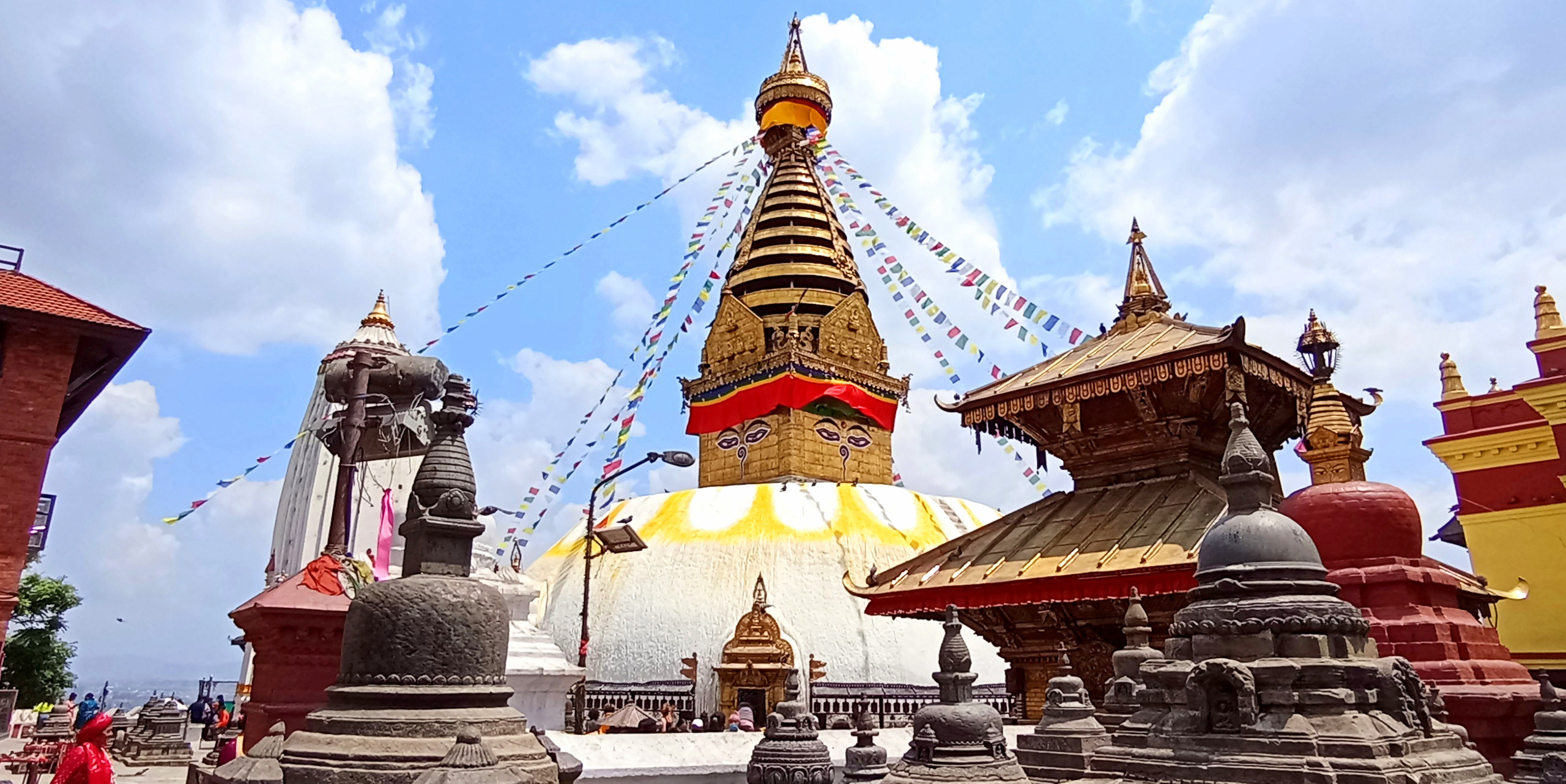
-
History and Significance: The origins of Swayambhunath are steeped in mythological tales. According to legend, the valley in which Kathmandu sits was once a lake. It is said that the hill on which the stupa now stands spontaneously rose from the water, crowned by a blazing light that marked the location as sacred. Historical records suggest that the stupa was already an important Buddhist pilgrimage destination by the 5th century A.D. Swayambhunath is a symbol of peace and has been a key site for the coexistence of Hindus and Buddhists in Nepal. The stupa features a dome at the base, above which sits a cubical structure decorated with the eyes of Buddha looking in all four directions, symbolizing the omnipresent nature of the Buddha.
-
Architecture: The architecture of the Swayambhunath Stupa is rich in symbolic elements. The dome, which represents the earth, supports a cubical structure with a spire on top. This spire consists of thirteen tiers, representing the steps to enlightenment or Nirvana. The iconic "eyes of Buddha" on the four sides of the cube are central to the stupa's design, symbolizing the all-seeing ability of the Buddha. The stupa is surrounded by numerous shrines and temples, some of which are dedicated to Hindu gods and goddesses, integrating Buddhist and Hindu practices. This mixture of religious iconography is a testament to Nepal's cultural and religious inclusivity.
-
Cultural and Religious Practices: Swayambhunath is a center of daily worship and annual celebrations. During Buddha Jayanti, the birthday of Buddha, the complex is bustling with devotees who come to offer prayers and celebrate. The site is also frequented by pilgrims and tourists who come to spin the prayer wheels that line the base of the stupa, a practice believed to bring merit and good fortune. The stupa’s location provides a serene environment for meditation and reflection. Monks, pilgrims, and visitors can be seen performing kora, a form of meditation that involves walking around the stupa while reciting mantras.
-
Impact and Preservation: Declared a UNESCO World Heritage Site in 1979, Swayambhunath is not only a spiritual and tourist landmark but also a symbol of Nepal’s commitment to preserving its historical sites. Efforts to maintain and restore the stupa, particularly after damages from earthquakes, are ongoing, reflecting the national and international importance of this sacred site.
Visiting Swayambhunath offers a profound insight into the spiritual history of Nepal and its enduring appeal as a place of peace and prayer. It remains a must-visit for anyone seeking to experience the tranquility and beauty of Nepalese religious traditions.
Boudhanath Stupa
Boudhanath Stupa stands as one of the largest and most significant Buddhist stupas in the world, located in the heart of Kathmandu, Nepal. This iconic structure is not only a pivotal point of Tibetan Buddhism in Nepal but also a symbol of peace, attracting thousands of pilgrims and visitors from around the globe each year.
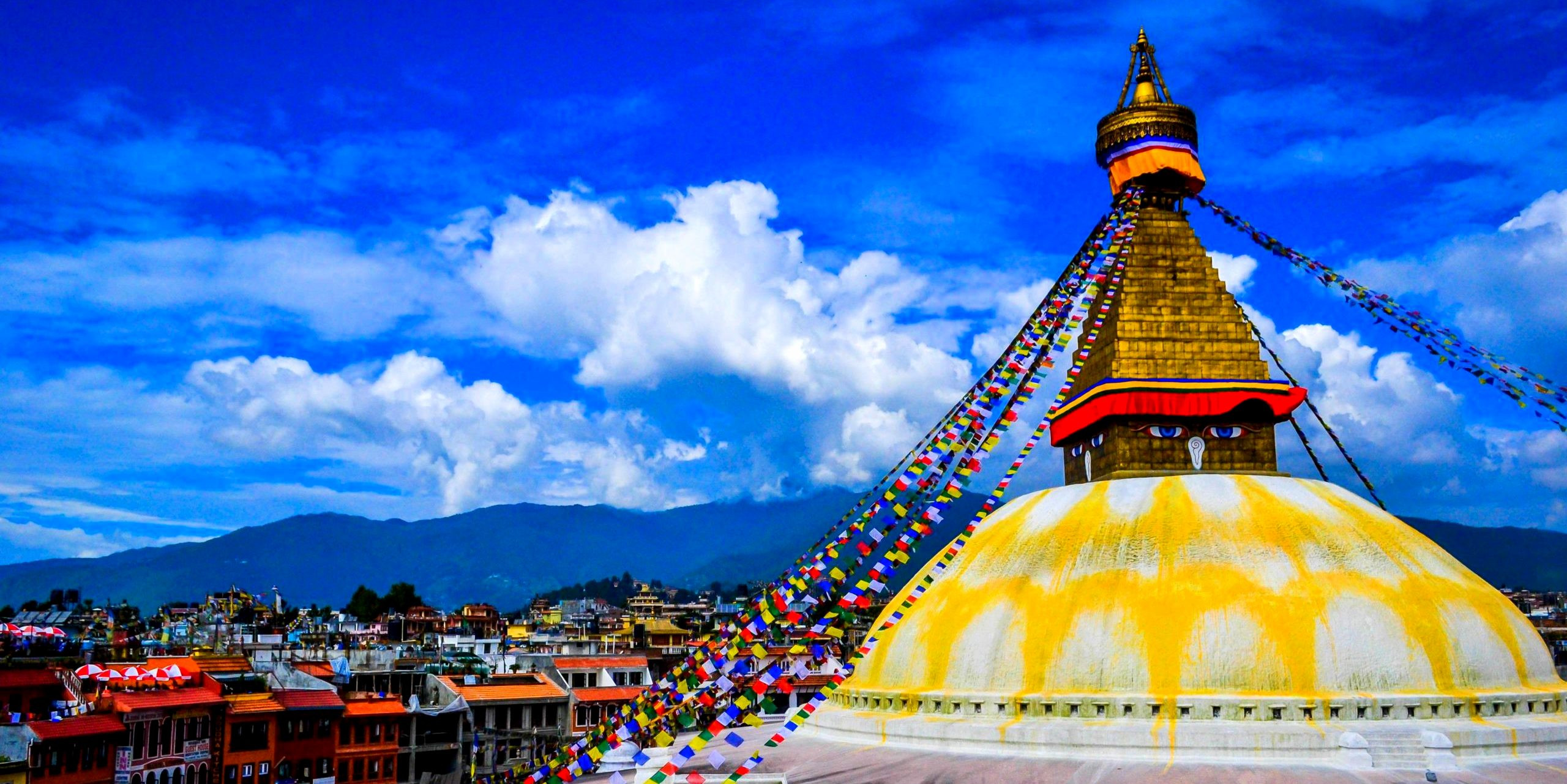
-
History and Significance: The history of Boudhanath Stupa dates back to the 5th century AD, although various legends recount its earlier origins. According to one popular story, the stupa was constructed by an old woman who asked for land from a king and built this massive structure as an act of devotion. Boudhanath serves as a major pilgrimage center and holds a significant place in the hearts of the Tibetan community in Nepal, especially those who came as refugees following the Chinese invasion of Tibet. The stupa is designed as a giant mandala, meant to represent the Buddhist cosmos. It is said to entomb the remains of Kassapa Buddha, making it a site of great reverence and veneration.
-
Architecture: The architectural grandeur of Boudhanath is visible in its massive size and intricate design. The stupa's white dome symbolizes a spotless lotus flower floating on the waters of creation. The dome is topped by a square tower bearing the omnipresent eyes of the Buddha, looking out in the four cardinal directions. These eyes symbolize the Buddha's omniscience. The thirteen tiers above the tower represent the stages that a human being must pass through to reach nirvana. The base of the stupa is surrounded by a circular path, making it a popular site for circumambulation, a practice that is both a form of meditation and a physical expression of devotion for many Buddhists.
-
Cultural and Religious Practices: Boudhanath is a vibrant hub of faith, culture, and activity. Traditional Tibetan Buddhist festivals are celebrated with great enthusiasm; among these, Losar (Tibetan New Year) stands out as a particularly festive time. Daily, devotees walk around the stupa in a clockwise direction, spinning prayer wheels embedded in its base, reciting mantras, and meditating. This area is also a cultural melting pot, with numerous monasteries surrounding the stupa and a thriving community of monks and laypeople from various countries contributing to the site’s dynamic atmosphere.
Boudhanath remains a testament to Nepal's resilience and dedication to cultural preservation. It continues to be a place where individuals from diverse backgrounds find common ground in their search for peace and understanding. For anyone visiting Nepal, Boudhanath Stupa offers a profound glimpse into the spiritual practices and communal life that are central to Nepalese and Tibetan cultures.
Kathmandu Durbar Square
Kathmandu Durbar Square, also known as Basantapur Durbar Kshetra, is located in the heart of old Kathmandu city in Nepal, serving as a spectacular showcase of architecture, history, and religion. This historic palace square is a focal point of cultural and spiritual activities, and it played a central role as the residence of Nepal's monarchy until the late 19th century.
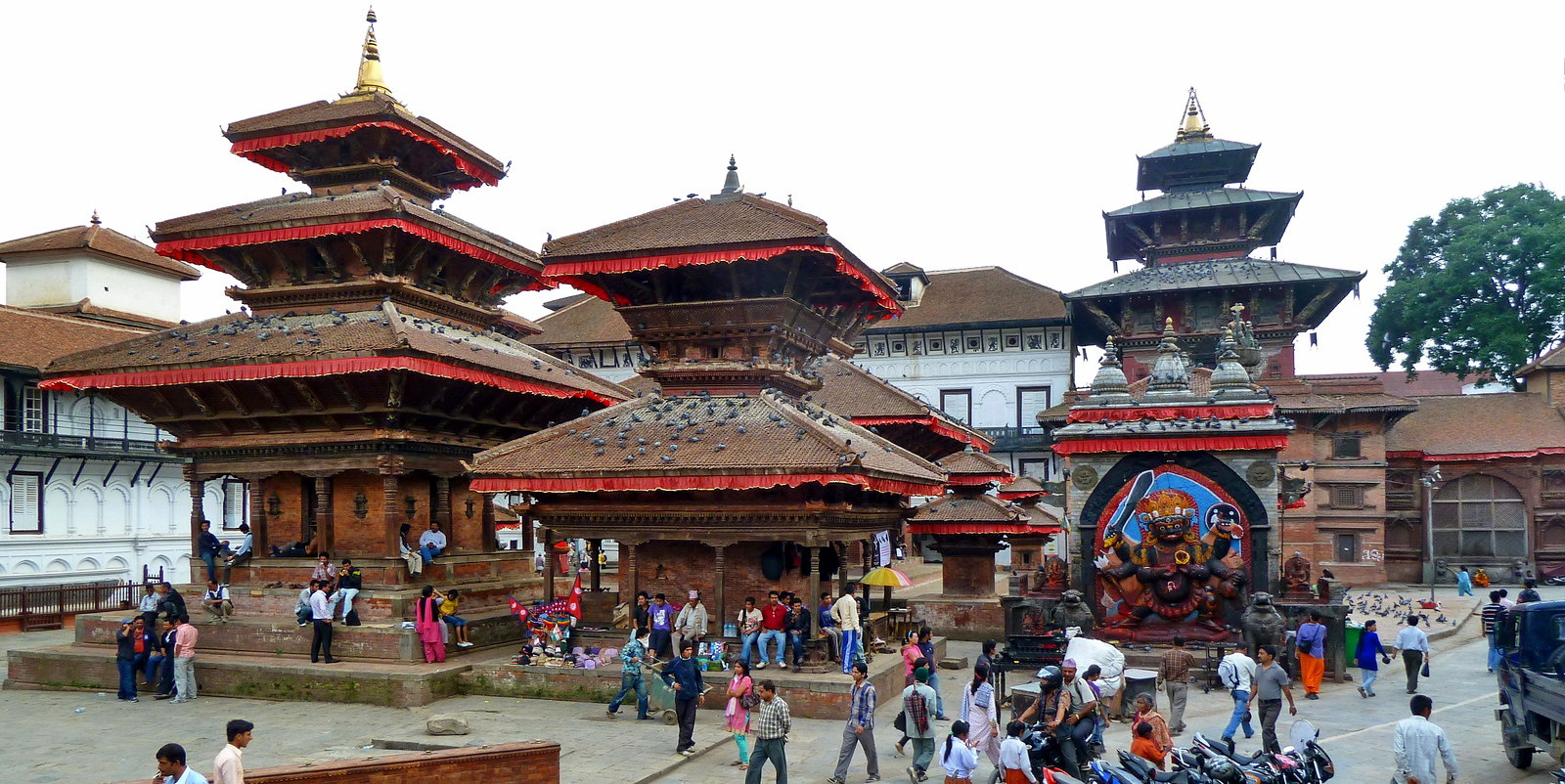
-
History and Significance: Kathmandu Durbar Square is surrounded by spectacular architecture that demonstrates the skills of the Newar artists and craftsmen over several centuries. The square was the royal Nepalese residence until the construction of the Narayanhiti Palace, and it remains the site of important royal events like the coronation of the Nepali monarch. The square itself is a complex of temples, idols, open courts, and water fountains, each representing various epochs of the Malla dynasty, which ruled from the 12th to the 18th century. The area is also significant for its role in the social and religious life of the people, serving as the primary venue for festivals, rituals, and celebrations.
-
Architecture: The architecture of Kathmandu Durbar Square is a rich mix of pagoda and shikhara styles, adorned with intricately carved wood and stone work — a hallmark of traditional Nepali craftsmanship. Notable structures within the square include the Taleju Temple, built by King Mahendra Malla in 1549 A.D., and the Hanuman Dhoka, the royal palace. The square also features the Kumari Ghar, home to the living goddess Kumari, who is considered to be an incarnation of the goddess Taleju. The buildings in the square saw significant damage during the 2015 earthquake, but restoration efforts have been ongoing to preserve their historic and cultural integrity.
-
Cultural Practices: Kathmandu Durbar Square is not just an architectural wonder but also a living museum of Nepali history. It is central to many of Kathmandu’s most important cultural activities, including the Indra Jatra and Dashain festivals, during which the living goddess Kumari is paraded in a chariot. These events attract both locals and tourists who come to witness traditional Nepali culture in its most vibrant form.
-
Impact and Preservation: Recognized as a UNESCO World Heritage Site in 1979, Kathmandu Durbar Square is one of the most iconic tourist attractions in Nepal, known for its cultural and historical significance. The square is an essential part of any visit to Nepal, offering insights into the nation's glorious past and vibrant present.
Despite the challenges posed by natural disasters and urbanization, efforts to preserve the authenticity and vitality of this historic site continue, making it a perpetual symbol of Nepal's resilience and cultural pride. For visitors, Kathmandu Durbar Square offers a profound glimpse into the art, culture, and history that define this fascinating city.
Patan Durbar Square
Patan Durbar Square, located in the heart of the city of Lalitpur in Nepal, is one of the most visually stunning cultural sites in the country. Renowned for its exquisite craftsmanship and artistic heritage, Patan Durbar Square is a focal point of both history and tradition, making it an essential destination for anyone visiting Nepal.
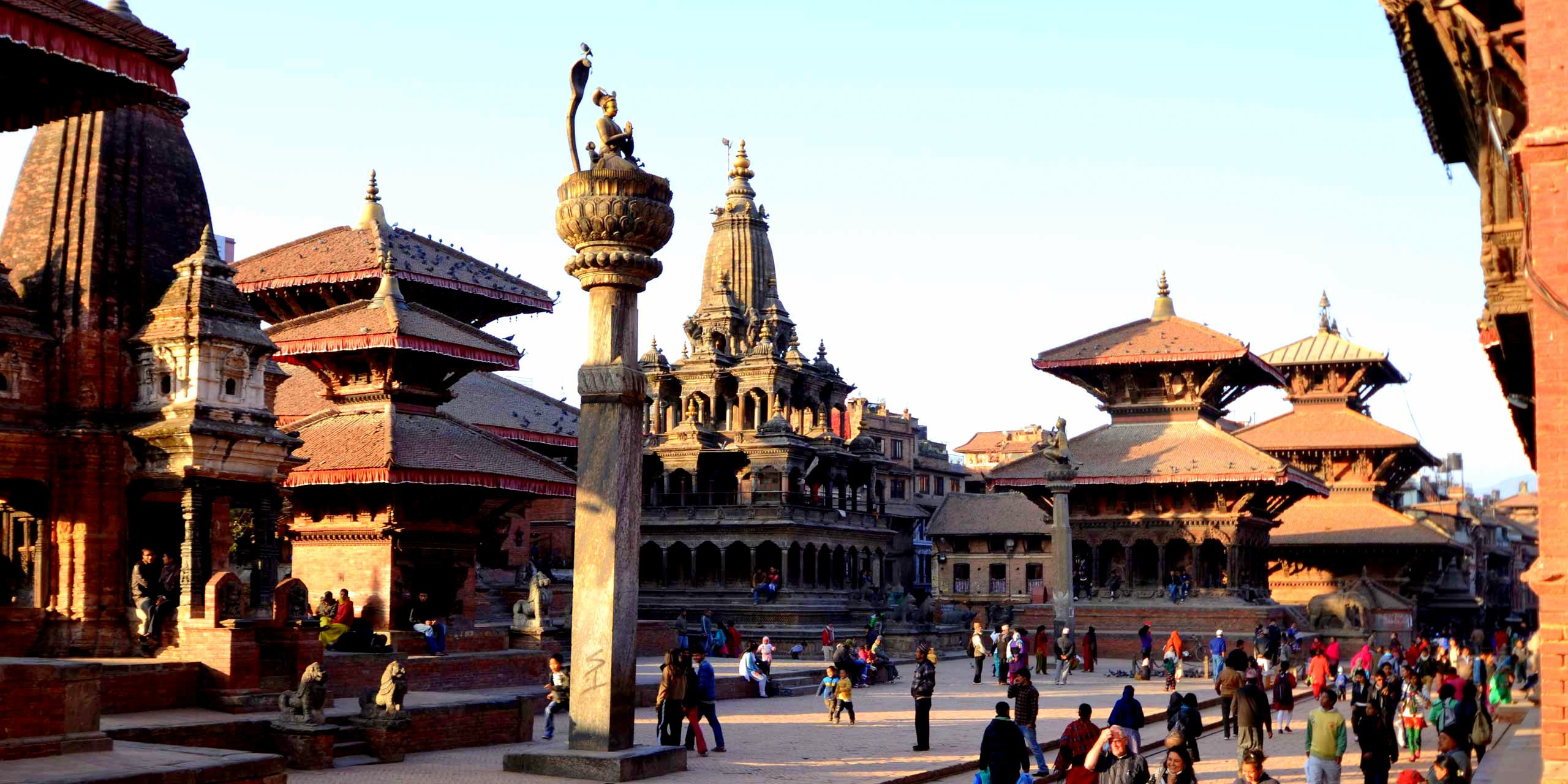
-
History and Significance: Patan, also known as Lalitpur (the City of Beauty), is one of the oldest known Buddhist Cities. It is said to have been founded in the 3rd century B.C. by Emperor Ashoka. Patan Durbar Square is the former royal palace complex of the Malla kings, who ruled the city from the 12th to the 18th century. This square has been a cultural and political hub of Patan, reflecting the city’s rich history and architectural grandeur.
-
Architecture: The architecture in Patan Durbar Square is marked by a blend of both Hindu and Buddhist influences, featuring a series of palaces, courtyards, and temples that were constructed from the 14th to the 18th centuries. The square includes three main courtyards: Mul Chowk, Sundari Chowk, and Keshav Narayan Chowk, each adorned with intricate carvings and ornate details. Prominent structures within the square include the Krishna Mandir, built entirely of stone in the shikhara style and adorned with exquisite carvings of scenes from the Mahabharata and Ramayana. Another significant building is the Patan Museum, housed in the former Royal Palace of the Malla Kings, which contains a vast collection of bronze statues and religious objects showcasing the city’s historical and artistic legacy.
-
Cultural Practices: Patan Durbar Square is not just an architectural treasure; it's also a vibrant center of daily life and culture. The square and its surroundings come alive during various festivals and events, most notably during Krishna Janmashtami (the birth of Lord Krishna) and Buddha Jayanti (the birthday of Buddha). During these festivals, the square becomes a hub of devotion, music, and dance, displaying the rich cultural fabric of Nepal.
-
Visiting Patan Durbar Square: For visitors, Patan Durbar Square offers a unique opportunity to dive deep into the historical arts and cultural ethos of Nepal. The square’s atmosphere is imbued with the spirit of the past yet vibrates with contemporary life, offering a picturesque glimpse of Nepalese history interwoven with the threads of the present.
Patan Durbar Square remains an unforgettable highlight for those exploring Nepal, promising a rich blend of history, art, and tradition in one of the most majestic settings in the country.
Bhaktapur Durbar Square
Bhaktapur Durbar Square, located in the ancient city of Bhaktapur, also known as Bhadgaon or Khwopa, within the Kathmandu Valley, is a prime example of a royal Nepali courtyard that captures the cultural, religious, and historical essence of Nepal. It stands as a magnificent reflection of the city's heyday during the Malla dynasty, which ruled from the 12th to the 18th century.
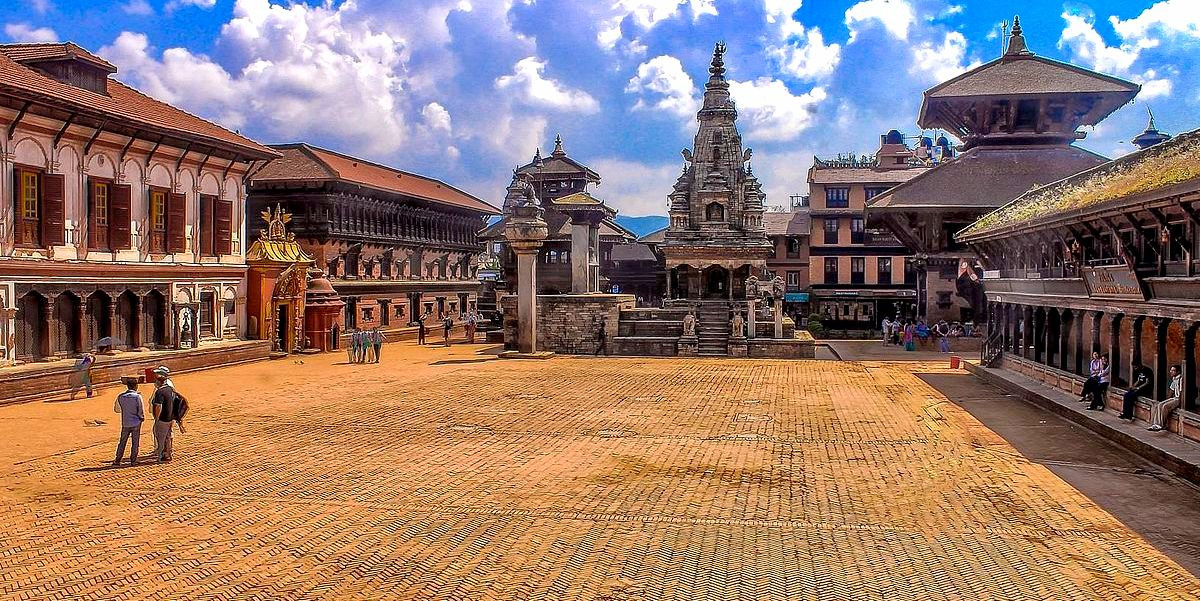
-
History and Significance: Bhaktapur, meaning "the city of devotees," was established in the 9th century and is renowned for its rich culture, temples, and wood, metal, and stone artworks. Bhaktapur Durbar Square is the jewel in the crown of this ancient city, showcasing architectural marvels that represent the pinnacle of stone masonry of the Malla period. This square was the seat of royalty before Kathmandu became the capital.
-
Architecture: The architecture of Bhaktapur Durbar Square is characterized by its vast collection of ancient temples, palaces, courtyards, and streets that mirror the city's historical and cultural richness. Notable structures within the square include the 55 Window Palace, which features exquisite wooden carvings and served as the royal palace of the Bhaktapur Kingdom; the Golden Gate, which is an embellished gateway leading to the palace's main courtyard; and the Lion's Gate, which has two huge statues of lions alongside figures of gods. The square also houses the Vatsala Temple, famous for its sandstone structure and the bronze bell known as the "bell of barking dogs," which is rung during worship and on certain festivals. The Nyatapola Temple, which is a five-storied pagoda, is regarded as Nepal's tallest pagoda structure, renowned for its massive structure and intricate artistic work.
-
Cultural Practices: Bhaktapur Durbar Square is central to many cultural and religious festivals observed in Bhaktapur. One of the most spectacular is the Bisket Jatra, the Nepalese New Year celebration, which involves a dramatic chariot procession and tug-of-war between different parts of the town. The festival draws large crowds and is a vibrant display of local customs and fervor.
-
Visiting Bhaktapur Durbar Square: For visitors, Bhaktapur Durbar Square offers a captivating glimpse into medieval Nepali life. The city's well-preserved cultural dynamics, ancient streets, and the warmth of its people make exploring the square a unique and enriching experience. It remains less touched by modernization than other parts of the valley, offering an authentic experience of traditional Nepali culture and architecture.
Bhaktapur Durbar Square is a must-visit destination for those interested in experiencing the depth and diversity of Nepal's historical and cultural heritage, providing a profound insight into the art and architecture that define the Kathmandu Valley.
Lumbini
Lumbini, recognized as the birthplace of Siddhartha Gautama, the Lord Buddha, is one of the most revered sacred sites in the Buddhist world. Located in the Rupandehi District of the Lumbini Province in Nepal, this site is not just a cornerstone of religious reverence but also a beacon of peace and a testament to the spiritual heritage that spans thousands of years.
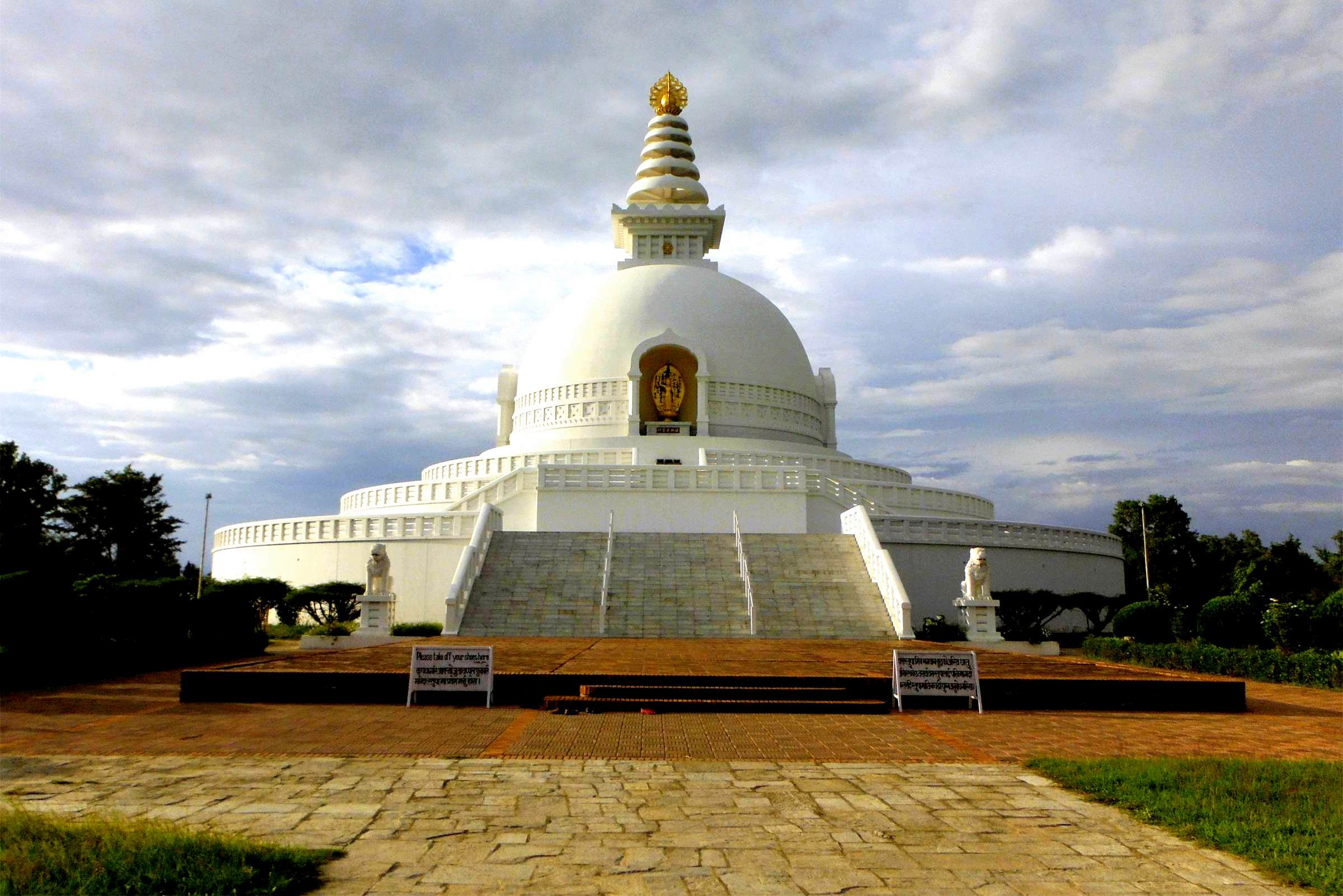
-
History and Significance: Historical texts recount that Queen Mayadevi gave birth to Siddhartha Gautama around 563 BCE in the beautiful gardens of Lumbini. The site's historical significance was commemorated by Emperor Ashoka, who visited around 249 BCE and erected one of his commemorative pillars there. The pillar, inscribed with details about the birth of the Buddha, serves as a critical piece of evidence confirming Lumbini as the Buddha's birthplace.
-
Archaeological and Cultural Heritage: Lumbini is characterized by a number of ancient ruins and religious artifacts. Central to these is the Mayadevi Temple, which houses the marker stone that indicates the exact spot where the Buddha was born. Excavations around the temple have revealed ancient ponds, stupas, and monastic complexes, which provide insight into the architectural and cultural contexts of historical Buddhist practices. The entire site is designed as a large monastic zone, where only monasteries can be built. No shops, hotels, or commercial enterprises are allowed in this zone. The master plan for Lumbini, designed by the famous Japanese architect Kenzo Tange, emphasizes the creation of a peaceful and meditative environment. This plan includes a central canal connecting different parts of the site, enhancing its serene and contemplative atmosphere.
-
Pilgrimage and Tourism: Lumbini is visited by thousands of pilgrims each year, especially on significant dates on the Buddhist calendar, like Buddha Jayanti (Buddha's birthday). Pilgrims from various countries, including Tibet, India, Sri Lanka, and Thailand, come to meditate and pay respects at the sacred garden, the temple, and the many international monasteries around the site.
-
Impact and Preservation: Declared a UNESCO World Heritage Site in 1997, Lumbini's management and preservation are overseen by the Lumbini Development Trust. The site's status not only underscores its universal cultural importance but also ensures continued international support for its preservation and enhancement as a place of global pilgrimage and understanding.
-
Visiting Lumbini: For visitors, Lumbini offers a profound insight into the origins of one of the world's major religions. The site is not only a place for religious pilgrimage but also a destination for cultural enthusiasts eager to explore the rich tapestry of narratives and teachings that Buddhism offers. The peace garden, museums, and various monasteries provide a comprehensive look at Buddhist art, architecture, and the ongoing legacy of the Buddha’s teachings.
Lumbini remains an emblem of spiritual heritage and peace, making it a must-visit for anyone traveling to Nepal, seeking to understand more about the life of Buddha and the profound teachings of Buddhism that began in this tranquil place.
Tips to Visit World Heritage Sites of Nepal
Visiting the World Heritage Sites of Nepal is a captivating experience, rich with cultural depth and historical significance. To make the most of your trip to these remarkable sites, consider the following tips:
Plan Ahead
-
Research Each Site: Each World Heritage Site in Nepal has its own unique history, significance, and set of attractions. Before visiting, research each site to understand its cultural importance and what to expect.
-
Check for Timings and Entry Fees: Some sites may have specific visiting hours and require entry fees. Knowing these details in advance can help you plan your day more effectively.
Respect the Local Culture and Traditions
-
Dress Appropriately: Many of these sites are places of worship, so it’s important to dress modestly. Shoulders and knees should typically be covered.
-
Observe Local Customs: Always ask for permission before taking photographs, especially of monks, nuns, or worshippers. Some areas might restrict photography completely.
Hire a Local Guide
-
Enhance Your Understanding: A knowledgeable local guide can provide in-depth information about the history and legends of the sites. This can enrich your experience and provide insights that are not available in guidebooks.
-
Supporting the Local Economy: Hiring local guides also supports the local economy and promotes sustainable tourism.
Be Prepared for the Weather
-
Check the Weather Forecast: Weather can greatly affect your experience, especially if you plan to spend a lot of time outdoors. Nepal's weather can be unpredictable, so be prepared with appropriate clothing and gear.
-
Best Times to Visit: The best months for visiting are typically from October to December, when the weather is clear and dry. The pre-monsoon springtime, particularly March and April, is also a good time for visiting.
Stay Hydrated and Healthy
-
Drink Bottled Water: Always opt for bottled water or water that has been purified to avoid health issues.
-
Carry Snacks: Food options may be limited near some sites, so carrying your snacks can keep your energy levels up throughout the day.
Practice Responsible Tourism
-
Avoid Littering: Always dispose of your waste properly. If there are no disposal bins nearby, carry your trash until you find a proper disposal area.
-
Preserve and Protect: Be mindful not to damage any part of the sites. This includes not touching frescoes, carvings, or other historical artifacts.
Bring the Essentials
-
Carry Local Currency: Some sites may require entrance fees or donations, and local vendors may not accept credit cards.
-
Pack a Good Camera: With spectacular views and rich cultural scenes, you’ll likely want to capture many moments, so bring a good camera with enough memory and battery life.
By following these tips, your visit to Nepal's World Heritage Sites will not only be enjoyable but also respectful and enriching. These sites offer a window into Nepal’s past and present, making your journey a truly memorable one.
Rules and Regulations for World Heritage Sites of Nepal
Visiting World Heritage Sites in Nepal is a privilege that comes with certain responsibilities to ensure the preservation and respect for these significant landmarks. Here are some important rules and regulations to keep in mind when visiting the World Heritage Sites of Nepal:
Preservation of Sites
-
Do Not Touch Historical Artifacts: Avoid touching murals, sculptures, and other artifacts to prevent damage. The oils and dirt from human skin can degrade these delicate items over time.
-
No Graffiti: Do not write on or deface the walls or any structures within the heritage sites.
Respect for Cultural Norms
-
Dress Appropriately: Many heritage sites in Nepal are also places of worship. Visitors should dress modestly, covering shoulders and knees as a sign of respect.
-
Observe Silence: Maintain a respectful silence or speak softly when touring these sites, especially in areas designated for prayer or meditation.
Restricted Activities
-
No Smoking: Smoking is prohibited within the premises of most heritage sites to prevent fire hazards and pollution.
-
No Alcohol: Consuming alcohol is generally forbidden within and around the sacred and historical sites.
-
Photography Restrictions: Some areas within the heritage sites may prohibit photography. Always look for signs indicating such restrictions or ask your guide.
Environmental Care
-
Littering is Prohibited: Always dispose of your trash properly. Use designated garbage bins or carry your waste until you can dispose of it appropriately.
-
Plastic Ban: Some areas might have restrictions on the use of plastic bags and bottles to protect the environment.
Safety Measures
-
Stay Within Marked Areas: For your safety and the protection of the sites, do not climb on ruins or enter cordoned-off areas.
-
Follow Signage: Always follow the directions provided by signage around the sites, which are there to guide your visit and ensure safety and preservation.
Commercial Activities
-
No Unauthorized Commercial Activities: Selling goods or offering services without a permit is typically prohibited at these sites.
-
Drone Restrictions: Flying drones may be restricted or require prior permission due to the potential risk to visitors and the integrity of the structures.
Respect for Religious Practices
- Participation in Rituals: If you wish to participate in any rituals, it is best to ask for guidance from a local or a guide to ensure that your participation is appropriate and respectful.
Guided Tours
- Use of Authorized Guides: Hiring authorized guides not only ensures that you receive accurate information but also supports the local economy. These guides are often trained to educate visitors about the cultural significance and the do’s and don’ts of the site.
Adhering to these rules and regulations helps ensure that the World Heritage Sites in Nepal are preserved for future generations and that the cultural integrity of these places is respected by all visitors. This mindful approach enriches the visitor experience and supports sustainable tourism in Nepal.
The world heritage sites of Nepal pulses hubs of history, religion, and culture. The architecturally stunning Durbar Squares, the spiritually important Lumbini, and ancient temples such Pashupatinath and Boudhanath provide distinctive perspectives on Nepal's wonderful history. Not only historical landmarks, but also educational materials that enrich visitors and residents, these artifacts are. We are to maintain and protect these sites as their custodians so their stories and importance live on for future people. Protecting and celebrating the priceless heritage Nepal offers starts with protecting these sites.
FAQs for World Heritage Sites of Nepal
Q: What are the main World Heritage Sites in Nepal?
A: Nepal's UNESCO World Heritage Sites include cultural sites within the Kathmandu Valley (Pashupatinath Temple, Swayambhunath Stupa, Boudhanath Stupa, Patan Durbar Square, Bhaktapur Durbar Square, and Kathmandu Durbar Square), Lumbini (the birthplace of Buddha), and the natural site Sagarmatha National Park (home to Mount Everest).
Q: When is the best time to visit these heritage sites?
A: The optimal times are during the spring (March to May) and autumn (September to November) when the weather is clear and mild, ideal for both trekking and cultural exploration.
Q: Are there entry fees for the World Heritage Sites?
A: Yes, most sites charge an entry fee, which varies by location and is used for maintenance and preservation. It's advisable to check the latest fees before your visit.
Q: What should I wear when visiting these sites?
A: Dress modestly, covering shoulders and knees, especially at religious sites. Wear comfortable walking shoes due to the uneven terrain at many sites.
Q: Can I take photographs at these sites?
A: Photography is generally permitted, but some areas may have restrictions, especially inside temples or museums. Always check for signs or ask a guide about photography policies.
Q: How can I ensure I respect the cultural norms at these sites?
A: Follow local customs, such as removing shoes before entering temples, not touching religious artifacts, and keeping a respectful demeanor. Hiring a local guide can help you navigate these norms.
Q: Are guided tours available at these sites?
A: Yes, most sites offer guided tours, which are recommended to gain deeper historical and cultural insights. Official guides are knowledgeable and provide valuable information.
Q: What should I bring when visiting these sites?
A: Essentials include water, sunscreen, a hat, and snacks. For sites like Sagarmatha National Park, additional gear like good hiking boots and appropriate clothing is necessary.
Q: Are there any safety concerns I should be aware of?
A: Nepal is generally safe for tourists, but it’s important to stay alert in crowded areas and secure valuables. Always follow local advisories, especially regarding weather and political stability.
Q: How can I contribute to the preservation of these sites?
A: Adhere to site rules, avoid littering, and consider contributing to conservation funds. Supporting local artisans by purchasing handicrafts also helps the community economically.
For the Nepal tour, please click here.
If you are looking for different kinds of Nepal Tours or Trekking Packages, feel free to contact us.
